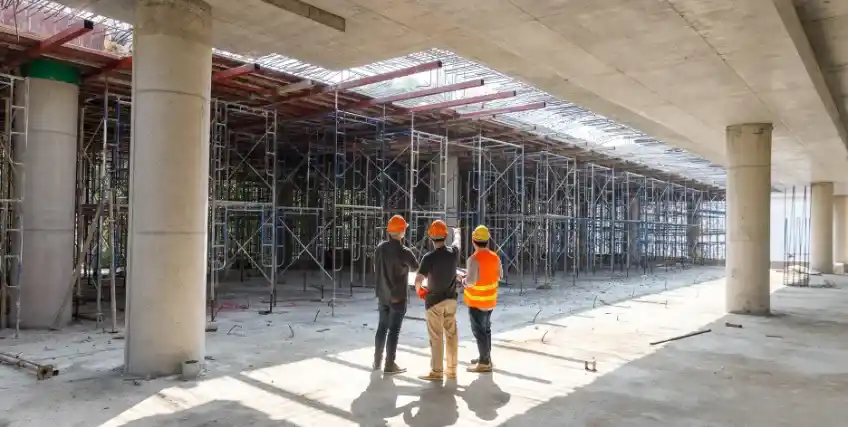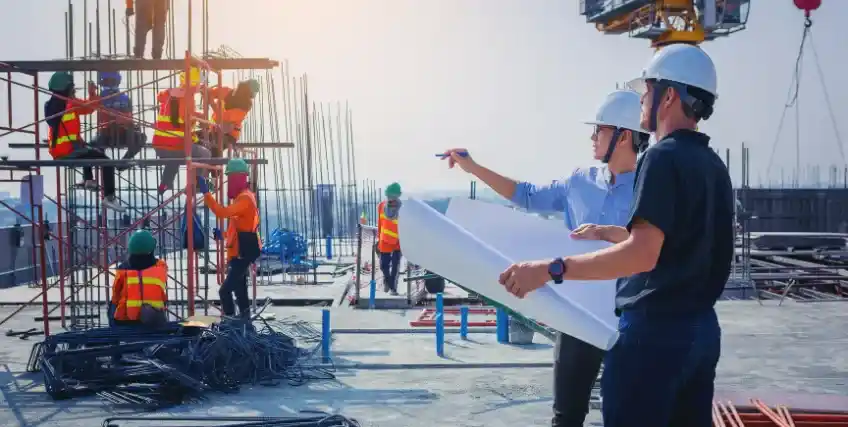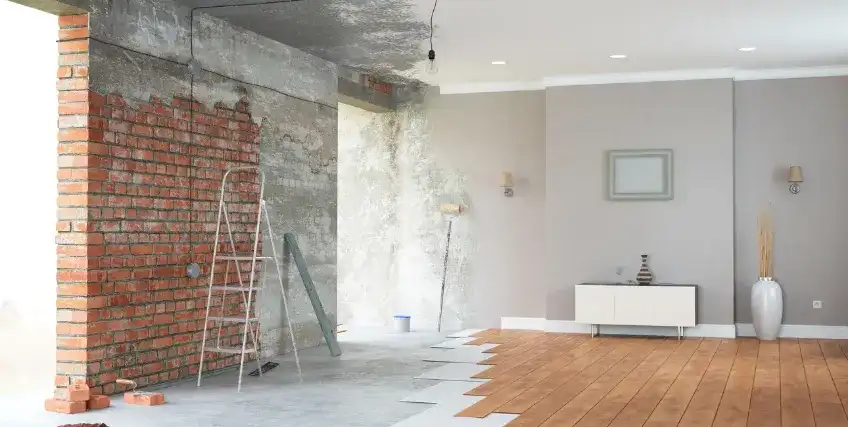Top Mistakes Small Business Owners Make With New Construction Lenders
August 14, 2025 | Last Updated on: August 14, 2025

For many small business owners, working with new construction lenders isn’t just about getting cash – it’s about shaping the future of their project. The wrong choice? That can derail everything from budgets to opening day.
Commercial builds and renovations are pricey and they’re not slowing down. In fact, U.S. construction spending has been climbing steadily over the past year, with labor and material costs both pushing higher. That means choosing the right new construction loan lenders is more critical than ever.
When you pick a lender without doing your homework, you risk high interest rates, messy draw schedules, and unexpected closing costs. Some borrowers also get blindsided by the difference between construction-to-permanent loans and short-term construction loans. One wrong move there and you might be stuck refinancing before the dust even settles.
The application process can feel overwhelming. Between the loan officer meetings, credit score checks, and figuring out loan options, there’s a lot to manage. But the truth is that the prep you put in before signing is just as important as the build itself.
Over the next sections, we’ll walk through the biggest mistakes owners make with new construction lenders, why they happen, and how to avoid them – so your next construction project stays on track and on budget.
Mistake 1: Skipping Due Diligence on the Lender
Too many small business owners jump into deals with new construction lenders without really knowing who they’re working with. On the surface, a low rate or “fast approval” pitch sounds great. But that’s not the whole picture.
Here’s where the trouble starts: some lenders for construction loans hide higher closing costs, have restrictive disbursement schedules, or lack flexibility if your construction project runs into delays. If you’re not digging into reviews, licensing, or track record, you might end up tied to a lender that’s more of a roadblock than a partner.
It’s not enough to ask about loan amount and interest rates. You’ve got to compare loan programs, check if they offer options like construction-to-permanent loans and see how they handle change orders or timeline shifts. Look for transparency in the application process and responsiveness from the loan officer. If they avoid clear answers, that’s a red flag.
Reputable new construction lenders will be licensed, ideally registered with the NMLS, and have a strong portfolio of completed projects. Reading testimonials, asking for references, and checking their history with agencies like the Better Business Bureau can save you headaches.
The reality is that you would never hire a builder without checking their previous work. Then why gamble with the people financing your dream home or business property? A little research upfront can protect you from a very expensive lesson.
Mistake 2: Underestimating Project Costs
One of the most common traps small business owners fall into with new construction lenders is underestimating the true cost of a project. On paper, the numbers might look neat and tidy. However, in reality, construction has a way of blowing past budgets faster than you’d think.
Material prices fluctuate, labor costs climb, and unexpected code changes or permit requirements can hit without warning. A construction loan that seemed sufficient in the application process may suddenly fall short when the construction phase runs longer than planned.
The risk here isn’t just running out of money – it’s what happens next. You might need to request more funds, refinance into a permanent mortgage early, or take out a high-interest line of credit just to keep work going. And once you’re mid-build, your leverage with best construction loan lenders drops. They know you can’t walk away without major losses.
That’s why seasoned borrowers usually add at least 10–20% to their estimated loan amount. This buffer covers closing costs, timeline shifts, and unforeseen expenses like extra site prep or weather-related delays. It’s not just a safety net, it’s a survival tactic.
To sum up, overbudget on paper so you don’t underdeliver in reality. A little caution here can keep your construction project on track and save you from scrambling for last-minute financing options.
Mistake 3: Misreading Loan Terms and Interest Rate Triggers
When dealing with new construction lenders, the fine print isn’t just legal fluff – it’s where the real costs hide. Too many borrowers sign without fully grasping the loan terms, and that’s where trouble starts.
Some new construction lenders structure agreements with adjustable-rate clauses that can bump interest rates mid-project. Others may have interest-only payments during the construction phase, followed by a sudden jump once the permanent financing kicks in. If you’re not prepared for that payment shock, it can crush your cash flow.
Draw schedules are another sticking point. If the lender requires specific inspections before releasing funds, any delay in approvals can stall your construction project and your crew. Plus, missed milestones may trigger penalty fees or force you into renegotiating your loan amount.
Working with the best construction loan lenders means you’ll get clear, upfront explanations of these terms. Still, it’s on you to read everything, twice. Better yet, have a real estate attorney or experienced loan officer walk you through every clause, from closing costs to repayment timelines.
Bottom line: if you don’t fully understand the contract, don’t sign it. That quick skim could cost you thousands over the life of the loan.
Mistake 4: Ignoring Timeline Penalties
Working with new construction lenders means your funding is tied to time. Miss the agreed schedule, and the consequences can be costly.
Many lenders for construction loans include clauses that penalize delays. That might mean higher interest rates, extra closing costs, or even suspending further disbursements until work catches up. In extreme cases, the lender can demand repayment before the construction project is complete.
Here’s the tricky part: not all delays are in your control. Weather, supply shortages, or permit backlogs can throw off the construction phase. Still, if your loan officer and contract don’t account for these, you’re the one on the hook. That’s why it’s vital to negotiate realistic milestones during the application process.
The best companies for construction loans understand that builds rarely follow a perfect timeline. They’ll often allow some flexibility or offer loan programs with built-in buffers. But that’s something you need to confirm upfront.
Add time to your schedule the same way you add money to your budget – better to finish early than scramble under pressure. Because when it comes to new construction lenders, being late isn’t just inconvenient, it’s expensive
Mistake 5: Not Providing Updated Financials
Some small business owners think that once the loan application is approved, their job with new construction lenders is done. Not quite.
During the construction phase, most new construction lenders require updated financial statements before releasing the next round of disbursements. That means profit-and-loss reports, cash flow statements, and proof that your business is still in good shape to handle monthly payments. Skip this step or hand it in late and you could delay your project for weeks.
It’s not about being nosy. Lenders want to protect the loan amount they’ve committed. If your credit score drops sharply, or your debt-to-income ratio shifts, they might tighten terms or even halt funding. For businesses with thin margins, that pause can derail the entire construction project.
The best construction loan lenders make it clear in the application process how often updates are needed. They might ask for quarterly reviews or financials at every draw request. Either way, staying ahead by organizing documents in advance helps avoid bottlenecks.
Think of it like keeping an investor informed; you’d never leave them guessing. The same goes for your lender. Transparent, timely updates show you’re managing your project and finances responsibly, which keeps the money flowing.
Mistake 6: Choosing the Wrong Type of Loan
Not all new construction lenders offer the same kind of financing. And picking the wrong type of loan can leave you with terms that just don’t fit your project.
For example, some of the best companies for construction loans specialize in construction-to-permanent loans, which roll into a permanent mortgage once the construction phase is done. Others focus solely on short-term construction loans, which require refinancing into a new product – often at a higher interest rate – when the build is complete.
If you’re not sure which you need, think about your timeline, budget, and long-term plans. A borrower building a single location might benefit from a one-time close option. But if you’re financing multiple phases or properties, a line of credit might offer more flexibility.
The application process should include a conversation with your loan officer about different loan programs, from FHA or USDA-backed options to private lending. Ask how disbursement works, what your repayment schedule will look like, and whether there’s a penalty for early payoff.
Choosing the wrong loan isn’t just an inconvenience – it can change your monthly repayment amount, your closing costs, and even the success of your construction project. A smart match now can save you thousands later.
Mistake 7: Not Building a Relationship With the Lender
When working with new construction lenders, the relationship you build can be just as important as the loan amount. Yet many small business owners treat the process like a one-and-done transaction.
Here’s the truth: the best construction loan lenders see themselves as partners in your construction project. If they know you, trust you, and hear from you regularly, they’re more likely to be flexible with disbursement timing, repayment adjustments, or documentation requests.
On the flip side, if your only contact with your loan officer is at the start of the application process, you’re missing opportunities. Regular updates – whether it’s good news or small delays – show that you’re in control of the construction phase and respecting their investment.
This doesn’t mean endless meetings. It can be a quick monthly check-in, sending updated construction plans, or flagging potential changes early. That small effort can mean faster approvals and fewer surprises down the line.
New construction lenders who know you’re proactive are less likely to pull funding or enforce stricter terms when minor hiccups arise. And in a high-cost, tight-timeline industry like construction, that trust can be priceless.
Related Article : What Is New Construction Financing and How Does It Work?
Conclusion
Working with new construction lenders isn’t just about securing funds; it’s about steering your entire construction project toward success. The mistakes we’ve covered – whether it’s misreading loan terms, underestimating costs, or ignoring timeline penalties – can drain budgets and delay openings.
The right approach? Treat the application process like laying a foundation. Do your research, choose among the best construction loan lenders, and keep communication open from the first meeting with your loan officer to the final disbursement.
When you put in the same attention to detail with your lender as you do on-site, you’re more likely to finish on budget and on time.
FAQs About Working with New Construction Lenders
1. What do new construction lenders look for in an application?
They check your credit score, business plan, construction plans, and down payment capacity. Strong finances and a detailed loan application speed approvals.
2. Are there different types of new construction lenders?
Some focus on construction-to-permanent loans, others on short-term construction loans. The best construction loan lenders offer both.
3. How do draw schedules work with new construction lenders?
Funds are released in stages based on the construction phase. Missed milestones can delay disbursement. Always align schedules with your loan officer.
4. Can I refinance mid-project with another lender?
You might be able to, but it’s complex. Some new construction lenders impose prepayment penalties, and refinancing may require a full credit reassessment.
5. Do the best companies for construction loans require personal guarantees?
You might be able to, especially for first-time homebuyers or high-risk projects. Terms depend on the type of construction loan and your credit profile.
Frequent searches leading to this page
Related Articles
Navigating the Challenges of 0% Down Construction Loans: What Borrowers Should Know
October 16, 2025
Navigating New Construction Loans: Financing Your Business Build
September 30, 2025
How to Choose the Best Construction Loan Lender for Renovation Projects
September 11, 2025
Term Loans are made by Itria Ventures LLC or Cross River Bank, Member FDIC. This is not a deposit product. California residents: Itria Ventures LLC is licensed by the Department of Financial Protection and Innovation. Loans are made or arranged pursuant to California Financing Law License # 60DBO-35839




